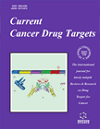
Full text loading...
We use cookies to track usage and preferences.I Understand
This study aimed to clarify the expression of a gene associated with Retinoid-Interferon-Induced Mortality-19 (GRIM-19) in Upper Urinary Tract Urothelial Carcinoma (UUTUC) and its prognostic significance for UUTUC patients.
Immunohistochemical (IHC) staining was used to determine the GRIM-19 expression in 70 paired samples. Progression-Free Survival (PFS) and Cancer-Specific Survival (CSS) were assessed using the Kaplan-Meier method. The independent prognostic factors for PFS and CSS were analyzed by multivariable Cox regression models.
IHC staining showed that GRIM-19 expression was significantly decreased in UUTUC, and its cellular location changed from being both cytoplasmic and nuclear to only cytoplasmic. Kaplan-Meier analysis revealed that the patients with tumors expressing low GRIM-19 had a significantly higher risk for tumor progression (P = 0.002) and cancer-specific mortality (P < 0.001) compared to those with high GRIM-19 levels. The Cox regression showed that both GRIM-19 expression (P = 0.025) and lymph node metastasis (LN) (P = 0.007) were independent predictors of progression in the muscle-invasive (MIC) subgroup. GRIM-19 expressions (entire cohort: P = 0.011; MIC subgroup: P = 0.025), LN (entire cohort: P = 0.019; MIC subgroup: P = 0.007), and progression (entire cohort: P < 0.001; MIC subgroup: P < 0.001) were independent predictors of cancer-specific survival.
Low expression of GRIM-19 in patients with UUTUC had significantly shorter PFS or CSS compared to those with high GRIM-19-expressing tumors. High GRIM-19 expression was also strongly associated with longer PFS in MIC patients. It indicates that GRIM-19 might serve as a promising prognostic biomarker for UUTUC patients.

Article metrics loading...

Full text loading...
References


Data & Media loading...
Supplements

